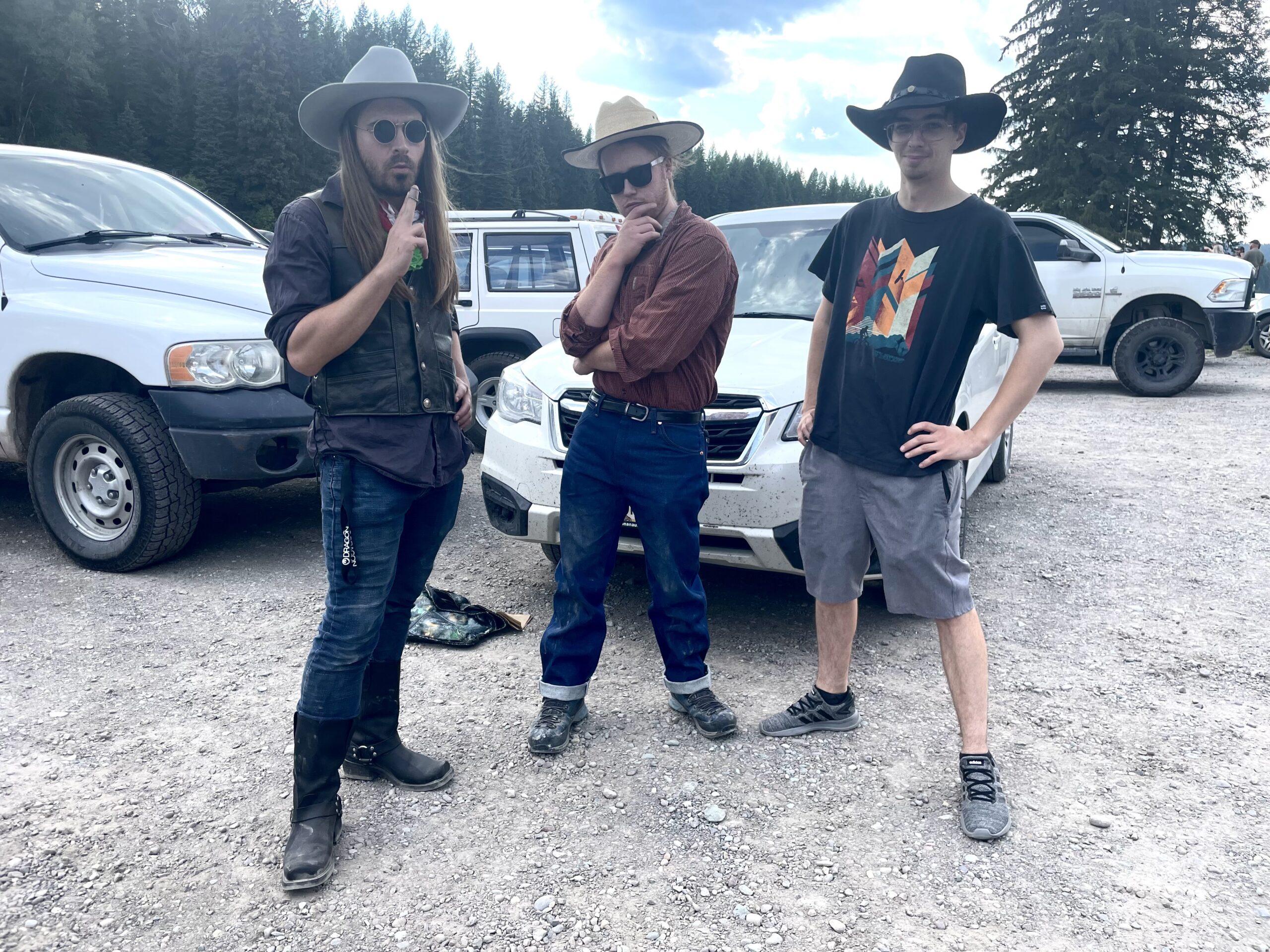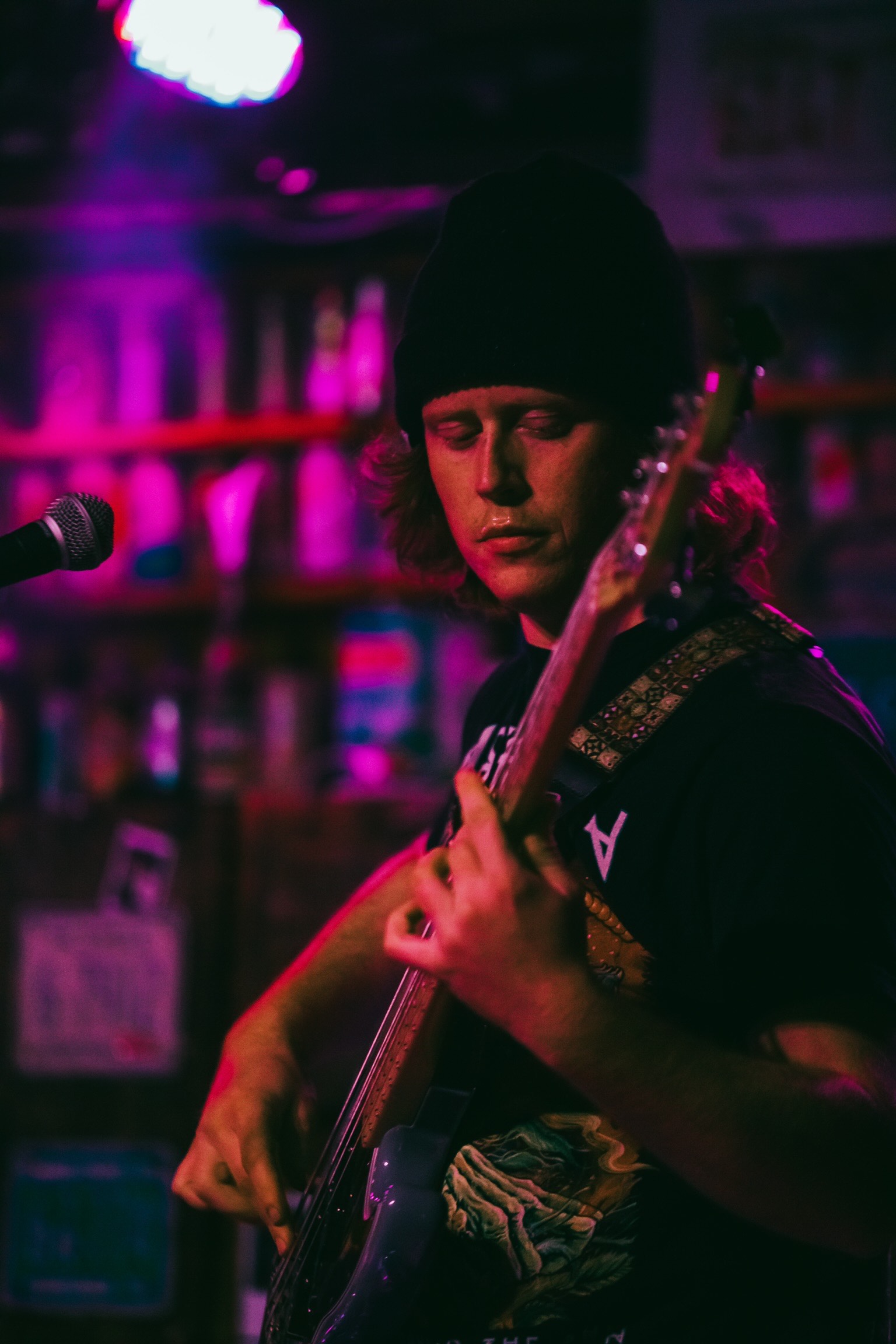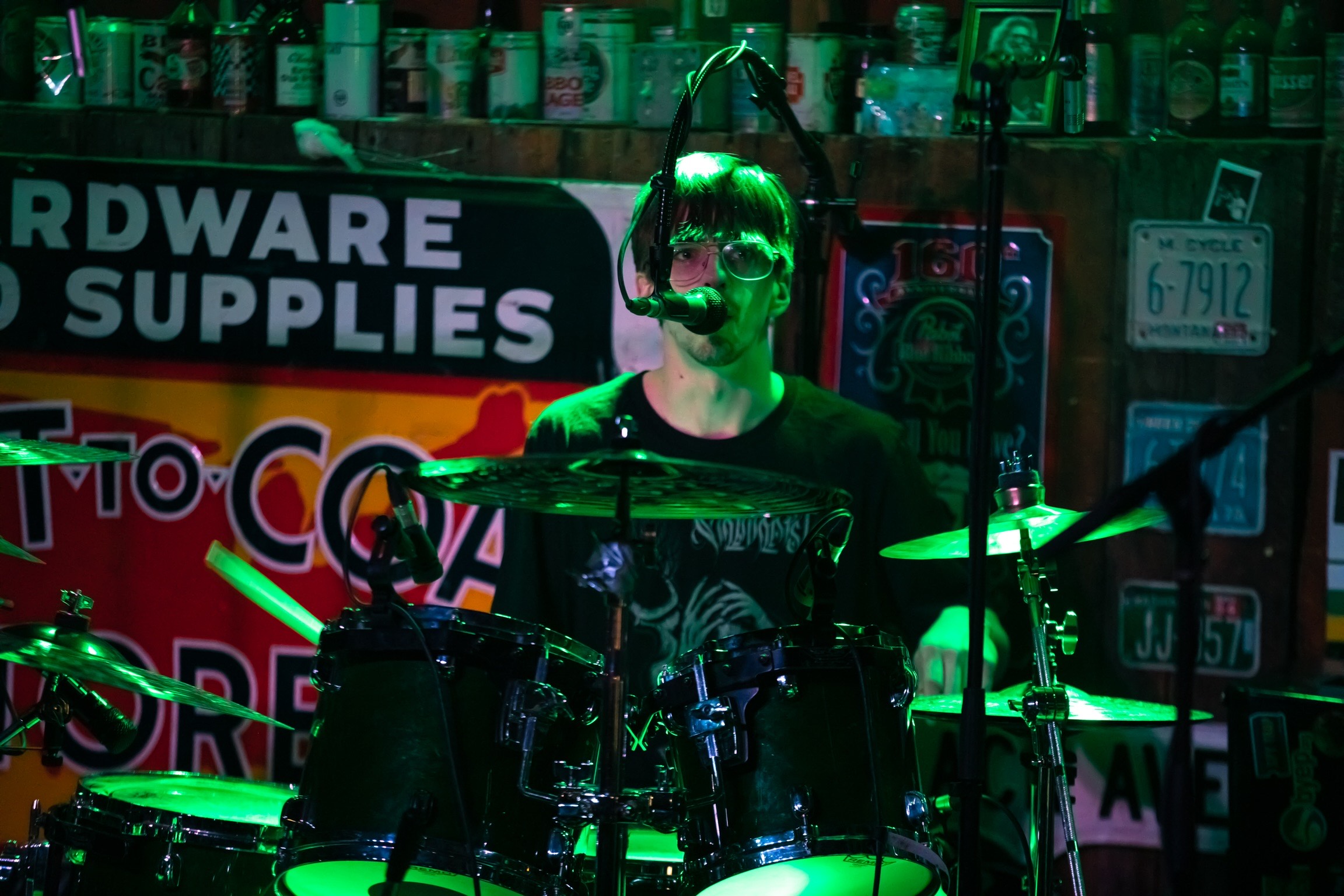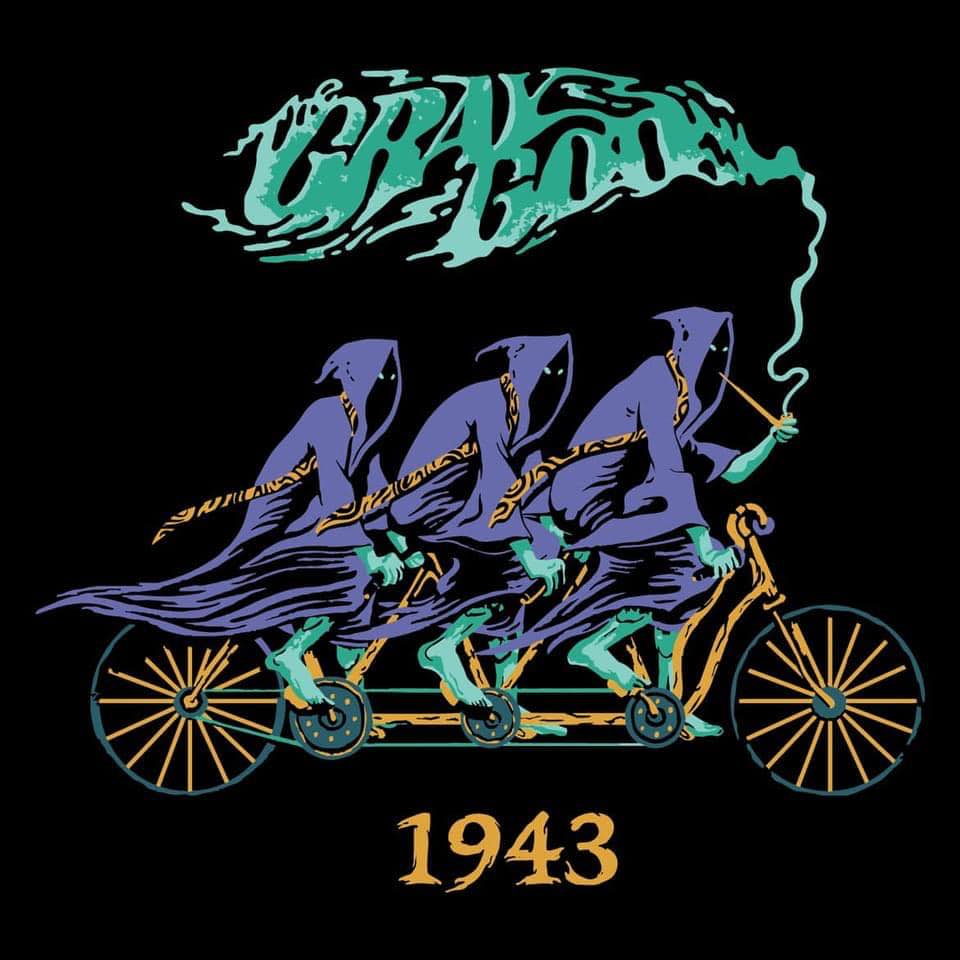**English version of the article and interview at the bottom**
La historia del stoner, no se remonta únicamente a aquella primera embestida que tuvo su auge en los años noventa, con bandas como Cathedral, Sleep, Kyuss, Monster Magnet, Fu Manchu, Spiritual Beggars, entre varios más. En realidad, el nacimiento del género se remonta hacia los años ochenta, con la aparición del movimiento conocido como NWOBHM (New Wave Of British Heavy Metal), de donde surgió un acto cuyo sonido era totalmente diferente al ofrecido por sus contemporáneos: ellos eran Witchfinder General y su debut Death Penalty, un historico álbum, repleto de riffs lentos con la influencia de Black Sabbath al máximo.
Witchfinder General fue el inicio de una nueva era, que trajo de regreso el rock pesado que surgió con bandas como Black Sabbath, Lucifer Fiends y Flower Travellin’ Band, pero ahora también se agregaba la influencia del movimiento psicodélico de los años sesenta. Y tras un lapso en donde la presencia del género disminuyó, en los últimos años, la escena musical a nivel mundial nuevamente fue invadida por una creciente ola de bandas stoner/doom.
Desgraciadamente, no todas estas bandas tratan de marcar la diferencia, y pareciera que muchas sólo se limitan a tratar de imitar a actos como Electric Wizard, en lugar de proponer algo diferente. Afortunadamente, también existe la otra cara de la moneda: bandas arriesgadas en su sonido, que experimentan con estilos musicales y hasta con instrumentos no convencionales para el género, tal es el caso de OM, una de las bandas más impresionantes de la actualidad, en donde el doom espiritual se funde con los sonidos de instrumentos como el sitar, tabla, violín y la flauta transversal, además del sonido poderoso emitido por el bajo del fundador de Sleep, Al Cisneros.
También es digno de destacar el trabajo de proyectos de reciente formación, como Liquify, BREATHS, y por supuesto, The Gray Goo (banda que ostenta el nombre de un hipotético final del mundo causado por nanotecnología molecular), un trío originario de Flathead Valley, Montana, conformado por Max Gargasz (guitarra, voz y producción), Matt Carper (bajo y voz) y Zach Ronish (batería y voz), quienes este año han presentado su álbum debut 1943, con una interesante y original fusión de stoner, doom, metal y psicodelia, además de magníficas dosis de funk, disco, punk y pinceladas de rock progresivo.
Tuvimos la oportunidad de conversar con Max Gargasz y Zach Ronish, acerca de la historia y planes futuros de la banda, su visión de la escena actual, el arte gráfico, entre varias cosas más.
Mike Riott: Han presentado este año ‘1943’, su álbum debut, pero obviamente siempre hay un camino recorrido para llegar a esto. ¿Cuánto tiempo llevan como banda?
Max Gargasz: Llevamos dos años como banda. Empezamos durante la pandemia, en aislamiento, mientras un par de nosotros vivíamos juntos en ese momento. El batería Zach Ronish y yo estábamos en otra banda a principios de 2020, pero desgraciadamente no superó la pandemia, así que decidimos formar The Gray Goo con el bajista y cantante Matt Carper. Todos somos amigos de toda la vida, así que la química fue genial desde el principio.
1943 es un álbum muy original y ecléctico en sonido, yendo desde el stoner y doom más tradicional, hasta elementos funk, stoner metal, heavy, psicodelia y hasta sonidos disco ¿Cuáles son las influencias musicales que los han nutrido para lograr este caleidoscopio musical?
MG: Todos hemos crecido escuchando y amando casi todos los géneros musicales. Creo que tenemos mucha suerte de no identificarnos colectivamente con una sola cosa. Eso hace que sea un reto describir la música a gente que no sabe necesariamente lo que le espera, pero también es muy divertido escuchar las perspectivas de otras personas sobre cómo creen que sonamos. A veces recibimos algunas comparaciones muy locas. Otra gran ventaja de no ceñirnos sólo al metal es la gran diversidad de gente que vemos reunida en nuestros conciertos.
Parece que somos capaces de mantener la atención del público bastante bien. La música es más efectiva cuando se practica la tensión y la liberación, y cuando se espolvorea el heavy doom en las partes climáticas de la actuación, hace que los picos y los valles sean mucho más dramáticos. Creo que somos doom para la gente que no sabe que le gusta el doom metal. Nuestras mayores influencias musicales son bandas como Primus, King Crimson, King Gizzard y Ween. Todos ellos son muy eclécticos y psicodélicos.
MR: ¿Quién se encargó de la producción del álbum?
MG: La producción del álbum fue una colaboración entre Wayne Randall, de Black Magick Studios y yo. Wayne es alguien que ha estado cerca de la banda desde el principio y conocía íntimamente el material, así que fue una elección natural.
MR: Un detalle que salta a primera vista es la estupenda portada, aunque desgraciadamente este trabajo visual, que complementa perfectamente el aspecto musical, se ve reducida a una miniatura en la versión digital disponible en las plataformas de streaming, mismas que son muy útiles a la hora de difundir la música, pero que también colocan el arte gráfico como algo secundario. ¿Qué tan frustrante puede llegar a ser esto?
MG: Como amante del formato clásico de los álbumes y de tener una pieza física de música en mis manos, lo encuentro bastante frustrante. El diseño visual de un gran álbum requiere mucho amor y a menudo parece que queda escondido bajo la alfombra. El arte del álbum puede ayudar a pintar una imagen en tu mente y ayudar a transmitir un ambiente. La música siempre ha ido de la mano de la cultura y el arte, y es una pena que parezca que nos estemos alejando de eso. Cuando uno piensa en grandes periodos musicales, como los años 60, por ejemplo,inmediatamente piensa en la paleta de colores y el aspecto visual de esa época.
En mi opinión, ésta es una de las principales razones por las que ha permanecido en la conciencia pública durante tanto tiempo. La música va y viene, pero la cultura es eterna. Me alegro de que te guste la portada. Isaac Passwater es nuestro artista principal. Ha diseñado todo el arte de nuestros CDs, que en este momento es nuestro único producto físico. Uno de nuestros objetivos es producir vinilos. Mucha gente nos pregunta por ello y nos encantaría, a través de ellos, volvernos aún más locos con los elementos de diseño.
MR: Mencionaste que este álbum es su único trabajo en formato físico. ¿Habían editado música en formato digital, antes de presentar ‘1943’?
MG: Como banda colectiva nuestro único lanzamiento oficial ha sido 1943. Hemos publicado una demo de cuatro canciones en Bandcamp que contiene versiones demo de temas anteriores a 1943. Sin embargo, en los próximos meses planeamos hacer un breve paréntesis en las actuaciones en directo, para seguir trabajando en el álbum 2, que ya está escrito en su mayor parte. Cualquiera que haya venido a un concierto en los últimos dos años, sabe que 1943 es sólo una muestra de nuestra música. Esperamos empezar a grabar este invierno.
MR: Desde el nombre de la banda, que hace referencia a un hipotético final del mundo a causa de nanotecnología molecular, se hace evidente un apego a la ficción ¿Qué inspira las letras de The Gray Goo?
MG: Las inspiraciones de nuestras canciones son tan eclécticas como la propia música. Estos dos primeros álbumes son realmente una muestra de nuestra creatividad en todas las direcciones. Nos estamos haciendo a la mar, por así decirlo. En el futuro planeamos elegir temas sólidos para ciertos álbumes. Un álbum conceptual entorno al escenario de Gray Goo es uno de los temas de un próximo álbum. Creo que será más evidente que nunca en el álbum 2 que actualmente no tenemos un tema sólido para nuestra música. Las próximas letras son ridículas jaja… sólo nosotros divirtiéndonos. Si no es divertido, no lo tocamos.
MR: Robert Plant dijo que una de las razones por las que el talento actual suele pasar desapercibido, es debido a la indiferencia de los medios de comunicación y, sobre todo, de los fans aferrados a las nostalgias. Y obviamente, en el caso de todo este revival psicodélico actual (del que ustedes, a pesar de su mezcla de géneros, no son ajenos) siempre habrá quienes vivieron la contracultura de los sesentas, que no acepten esta nueva versión de la psicodelia, esto debido a que vivieron la cumbre del género, con bandas como Country Joe and the Fish, The Pretty Things, Jefferson Airplane, The Animals, Chad & Jeremy, The United States Of America, etc. ¿Han notado alguna respuesta positiva a su propuesta por parte de generaciones anteriores?
MG: En los espectáculos en vivo recibimos una gran variedad de grupos de edad. Es cierto que la gente más abierta a la nueva música es la más joven, pero recibimos muchos elogios de toda clase de personas. Vivimos en la mejor época para descubrir música de toda la historia de la humanidad, sólo hace falta un poco de búsqueda. No te van a dar la música que necesariamente te gusta. La psicodelia clásica difiere del revival moderno en varios aspectos.
Creo que el revival es mucho más pesado y experimental, y quizá no sea del agrado de todos. Aunque me frustra escuchar a la gente decir que no se hace buena música hoy en día, también es muy gratificante cuando abres las mentes de esas mismas personas. Somos la siguiente generación de jóvenes que lleva la antorcha de la música psicodélica, que nunca se extinguió, sino que simplemente pasó de moda.
MR: ¿Como visualizan la escena stoner actual?
MG: En primer lugar, me encanta lo mucho que ha explotado en todo el mundo en los últimos años. En mi opinión, está reviviendo y dando nueva vida al rock and roll. Ha dominado absolutamente la escena musical underground. Sin embargo, me gustaría que hubiera más diversidad sonora. Hay muchas bandas que hacen exactamente lo mismo. Hay más cosas en las que inspirarse que en Black Sabbath. Sin duda son una de las mejores bandas que han existido, pero ya marcaron el camino hace décadas. Lo digo con cariño, necesitamos más diversidad dentro del género stoner y del género doom en su conjunto. Si no escuchas de todo, sonarás como todos.
MR: ¿Qué bandas nos podrían recomendar, dentro de la escena doom/stoner, que ustedes consideren que están proponiendo algo diferente?
MG: Hay muchos buenos ejemplos. Voy a dar una pequeña lista de grandes y únicas bandas nuevas que todo el mundo debería ver: Swamp Ritual, Wizzerd, Runecaller, Mountain Tamer, Kadabra, Merlock y Dhidalah. Hay cientos más, pero eso es sólo lo que se me ocurre.
MR: Hablando en específico de la escena musical estadounidense; hay mucha presencia del bluegrass y el country, y en los últimos años ha surgido un revival folk, además de una ola del llamado country gótico o southern Goth. ¿Hay una convivencia musical entre la escena psicodélica / doom stoner con estos géneros?
MG: Yo creo que sí. Personalmente, siempre he sido un gran fan de la música bluegrass. De nuevo, si volvemos a los años 60, la era psicodélica clásica tenía enormes solapamientos entre el rock y la música folk. Todos evolucionamos a partir del mismo árbol genealógico musical en términos de «música americana». La música estadounidense siempre ha sido un crisol cultural y creo que eso es lo que la hace grande. Creo que todos los géneros pueden coexistir dentro de la misma escena. Vivimos en Montana, hemos visto a los vaqueros en los moshpits y a los metaleros bailando música disco.
MR: En lo que respecta al segundo álbum de la banda ¿es probable que sea editado en el próximo año?
Zach Ronish: El álbum nº 2 saldrá definitivamente en algún momento de 2023. Se acerca el invierno y estamos listos para ponernos a trabajar, encender el estudio y empezar a grabar de nuevo. Estoy emocionado por este próximo disco, ya que tiene un montón de canciones extravagantes / tontas en él.
**********************************************************************************
The history of stoner doesn’t only go back to that first onslaught that boomed in the nineties, with bands like Cathedral, Sleep, Kyuss, Monster Magnet, Fu Manchu, Spiritual Beggars, among many others. Actually, the birth of the genre dates back to the eighties, with the emergence of the movement known as NWOBHM (New Wave Of British Heavy Metal), from which emerged an act whose sound was totally different from that offered by their contemporaries: they were Witchfinder General and their debut ‘Death Penalty’, a historic album, full of slow riffs with the influence of Black Sabbath to the maximum.
Witchfinder General were the beginning of a new era, bringing back the heavy rock that emerged with bands like Black Sabbath, Lucifer Fiends and The Flower Travellin’ Band, but now also adding the influence of the psychedelic movement of the sixties. And after a period of time where the genre’s presence diminished, in the last few years the world music scene was once again invaded by a growing wave of stoner/doom bands.
Unfortunately, not all of these bands try to make a difference, and it seems that many just try to imitate acts like Electric Wizard, instead of proposing something different. Fortunately, there is also the other side of the coin: bands that are daring in their sound, experimenting with musical styles and even with unconventional instruments for the genre, such is the case of OM, one of the most impressive bands of today, where spiritual doom merges with the sounds of instruments like the sitar, tabla, violin and transverse flute, in addition to the powerful sound emitted by the bass of Sleep’s founder, Al Cisneros.
Also worthy of note is the work of recently formed projects such as Liquify, BREATHS, and of course, The Gray Goo (a band named after a hypothetical end of the world caused by molecular nanotechnology), a trio hailing from Flathead Valley, Montana, consisting of Max Gargasz (guitar), Matt Carper (bass and vocals) and Zach Ronish (drums and vocals), who this year have presented their debut album 1943, with an interesting and original fusion of stoner, doom, metal and psychedelia, as well as magnificent doses of funk, disco, punk and touches of progressive rock.
We had the opportunity to talk with Max Gargasz and Zach Ronish, about the history and future plans of the band, their vision of the current scene, the graphic art, among many other things.
Mike Riott: You have presented this year, ‘1943’, your debut album, but obviously there is always a road travelled to get to this. How long have you been a band and how was it formed?
Max Gargasz: We’ve been a band for two years now. We started the band during the pandemic in isolation while a couple of us were living together at the time. The drummer Zach Ronish and I were in a different band towards the start of 2020, but unfortunately it didn’t make it through the pandemic sowe decided to form The Gray Goo with bassist and singer Matt Carper. We’ve all been friends our entire lives so the chemistry was great from the very beginning.
MR: 1943 is a very original and eclectic album in sound, going from the most traditional stoner and doom,to elements of funk, stoner metal, heavy, psychedelia and even disco sounds. What are the musical influences that have nurtured you to achieve this musical kaleidoscope?
MG: We all grew up listening to and loving almost every genre of music. I think we’re very lucky to collectively not identify as one thing. It makes it a challenge to describe the music to people who don’t necessarily know what they’re in for but it’s also really entertaining to hear other peoples perspectives on what they think we sound like. We get some wild comparisons sometimes.
Another big plus of not just sticking to metal is the large diversity of people we see gather at our shows. We seem to be able to hold an audience’s attention quite well. Music is most effective when practicing tension and release and when you sprinkle heavy doom into climactic parts of the performance it makes the peaks and valleys that much more dramatic. I think we’re doom for people who don’t know they love doom metal. Our biggest musical influences are bands like Primus, King Crimson, King Gizzard and Ween. All of which are very eclectic and psychedelic.
MR: Who was in charge of the production of the album?
MG: The production of the album was a collaboration between myself and Wayne Randall of Black Magick Studios. Wayne is someone who has been around the band since the very start and intimately knew the material, so he was a natural choice.
MR: A detail that jumps out at first sight, is the great cover, although unfortunately this visual work, which perfectly complements the musical aspect, is reduced to a thumbnail, in the digital version available on streaming platforms, which are very useful when it comes to disseminating music, but also place the graphic art as something secondary. How frustrating can this be?
MG: As a lover of the classic album format and holding a physical piece of music in my hands I do find it quite frustrating. So much loves goes into the visual design of a great album which often times seems to get swept under the rug. Album art can really help paint a picture in your mind and help convey a vibe. Music has always gone hand in hand with culture and art and it’s a shame we seem to be moving away from that. When you think of great musical periods like the 60s for example you instantly think of the color palate and the visual look of that era. In my opinion this is a huge reason why it’s stuck around in the public consciousness for so long.
Music comes and goes but culture is forever. Glad you like the cover! Isaac Passwater is our primary artist. He designed all the art on our CDs which at this time is our only physical product. A goal of ours is to produce vinyl. A lot of people ask about it and we’d really love to go even more crazy on the design elements there.
MR: You mentioned that this album is your only work in physical had you released music in digital format before presenting ‘1943’?
MG: As a collective band our only official release has been ‘1943’. We did release a four song demo on Bandcamp that contains demo versions of songs on ‘1943’ prior. However in the next couple months we plan on taking a brief hiatus on playing live shows to double down on finishing album 2, which is mostly written. Anyone who’s come to a live show in the past two years, knows that ‘1943’ is only a sample of our music. We hope to begin recording this winter.
MR: From the name of the band, which refers to a hypothetical end of the world due to molecular nanotechnology, it is evident an attachment to fiction. What inspires the lyrics of The Gray Goo?
MG: The inspirations behind our songs are as eclectic as the music itself. These first couple albums are really us shooting from the hip in every direction. Getting our sea legs so to speak. In the future we plan on choosing solid themes for certain albums. A concept album around The Gray Goo scenario is one of the themes for an upcoming album. I think it will be evident more than ever in album 2 that we don’t currently have a sound theme to our music. The upcoming lyrics are ridiculous haha.. just us having fun. If it isn’t fun,we don’t play it.
MR: Robert Plant said that one of the reasons why current talent usually goes unnoticed is due to the indifference of the media and above all, of fans clinging to nostalgia. And obviously, in the case of all this current psychedelic revival (of which you, despite your mix of genres, are no strangers) there will always be those who lived the counterculture of the sixties, who do not accept this new version of psychedelia, this because they lived the peak of the genre, with bands like Country Joe and the Fish, The Pretty Things, Jefferson Airplane, The Animals, Chad & Jeremy, The United States Of America, etc. Have you noticed any positive response to your proposal, by previous generations?
MG: At lives shows we get a wide variety of age groups. It’s certainly true that the more open minded people towards new music are younger people, however we get lots of compliments from all walks of life. We live in the greatest age to discover music in all of human history, it just takes a little bit of searching. You won’t be spoon fed music that you necessarily enjoy.
The classic psychedelic differs from the modern revival in various ways. I think the revival is a lot heavier and more experimental and that’s perhaps not everyone’s cup of tea. While I find it frustrating when I hear people claim that there’s no good music being made today, It’s also very rewarding when you open up the minds of those same people. We’re just the next generation of younger people that carry the torch of psychedelic music, it never went out but merely fell out of fashion.
The greatest thing about the era of modern music is the vast diversity that exists and it’s accessibility. You can find any sort of music that tickles your fancy.
MR: How do you visualize the current stoner scene from your perspective?
MG: Firstly I absolutely love how much it’s exploded all over the world in the last few years. In my opinion it’s reviving and pumping new life into rock and roll. It’s absolutely dominated the underground music scene. I would like to see more sonic diversity involved, however. Lots of bands out there are doing the exact samething. There’s more to draw inspiration from than just Black Sabbath. They’re undoubtedly one of the greatest bands to ever exist, but they already paved the way decades ago. I say this with love, we need more diversity within the stoner genre and the doom genre as a whole. If you don’t listen to everything, you’ll sound like everyone.
MR: What bands could you recommend us, within the doom/stoner scene, that you consider are proposing something different?
MG: There’s so many good examples. I’ll give a small list of great and unique newer bands that everyone should check out; Swamp Ritual, Wizzerd, Runecaller, Mountain Tamer, Kadabra, Merlock, and Dhidalah. There’s hundreds more but that’s just off the top of my head!
MR: Talking specifically about the American music scene; there is a lot of bluegrass and country music, and in the last few years a folk revival has emerged, as well as a wave of the so-called gothic country or southern goth. Is there a musical coexistence between the psychedelic / doom stoner scene and these genres?
MG: I believe there is. I’ve personally always been a massive fan of bluegrass music. Again if we return to the 60’s, the classic psychedelic era had massive overlaps between rock and folk music. We all evolved from the same musical family tree in terms of “American music”. American music has always been a cultural melting pot and I think that’s what makes it great. I believe all genres can coexist within the same scene. We live in Montana, we’ve seen cowboys in mosh pits and metal heads dancing disco.
MR: Regarding the second album of the band is it likely to be released in the next year?
Zach Ronish: Album #2 will definitely be released sometime in 2023. Winter is coming and we are ready to hunker down, fire up the studio and start working on recordings again. I am exited for this next record as ithas a lot of quirky/goofy songs on it.






